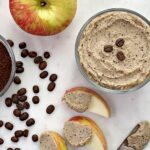What exactly is fiber, and how can it help us?
Dietary fiber is the rough part of plant foods that our body cannot digest or absorb. It helps our body with digestion and motility in our GI tract. Fiber is generally categorized into two types: soluble and insoluble.
Soluble fiber can absorb water, which then slows down how quickly food can move through our GI tract. Increasing soluble fiber can help to relieve any signs of diarrhea. Insoluble fiber, on the other hand, cannot absorb water. In fact, it moves through digestion completely unchanged! By doing so, this adds bulk to our stool and speeds up motility, which can help relieve any symptoms of constipation.
Sources of Each Type of Fiber
Soluble Fiber Foods:
Oats
Beans
Barley
Citrus Fruits
Apples
Insoluble Fiber Foods:
Whole grain starches (i.e. whole grain bread)
Nuts
Seeds
Vegetables
Beans (notice that beans have both soluble and insoluble fibers!)
4 Tips to Increase Your Fiber Intake
-
Leave the skins on fruits and veggies like apples and cucumbers (make sure you wash produce before prepping!)
-
Switch from a white bread to a whole grain bread once in a while.
-
Add beans to your favorite soup recipe – perfect for cozy winter dinners!
-
Opt for a smoothie or whole fruit over juice sometimes – fiber stays more intact this way.



